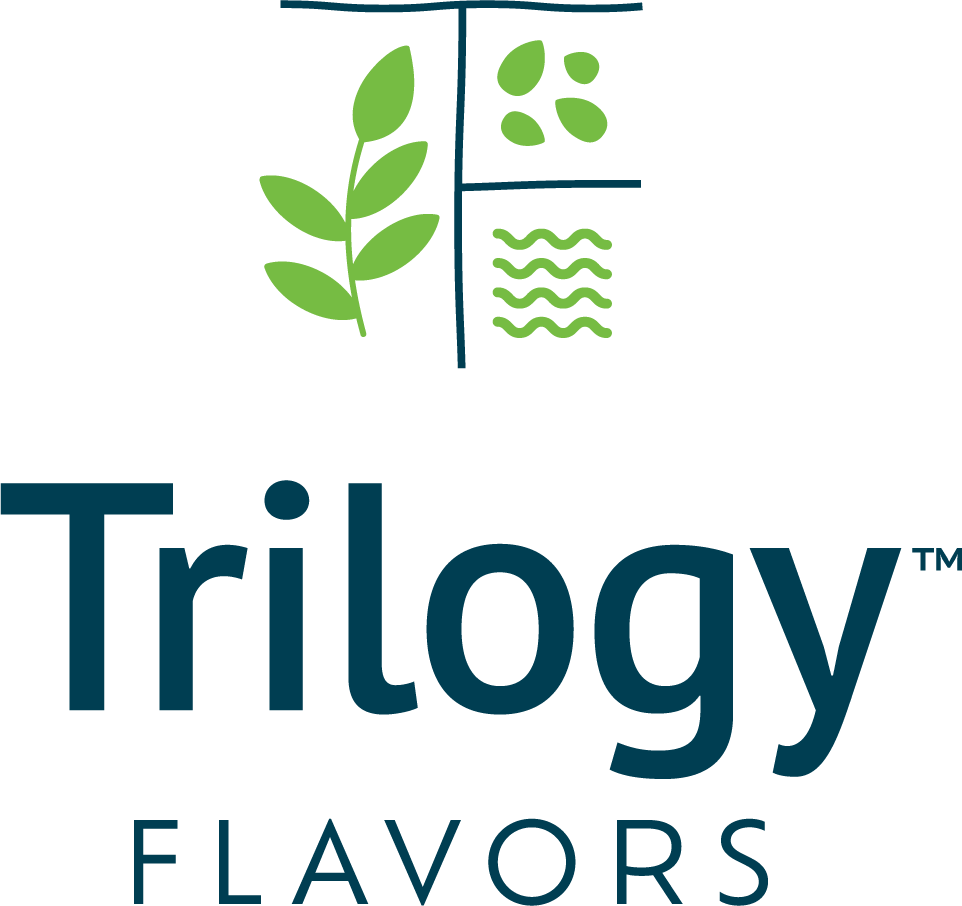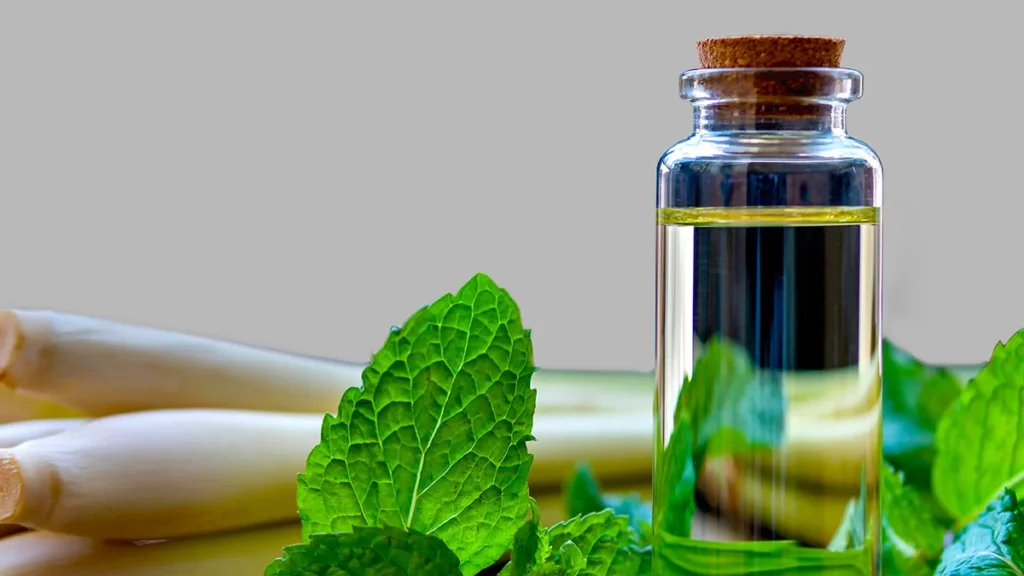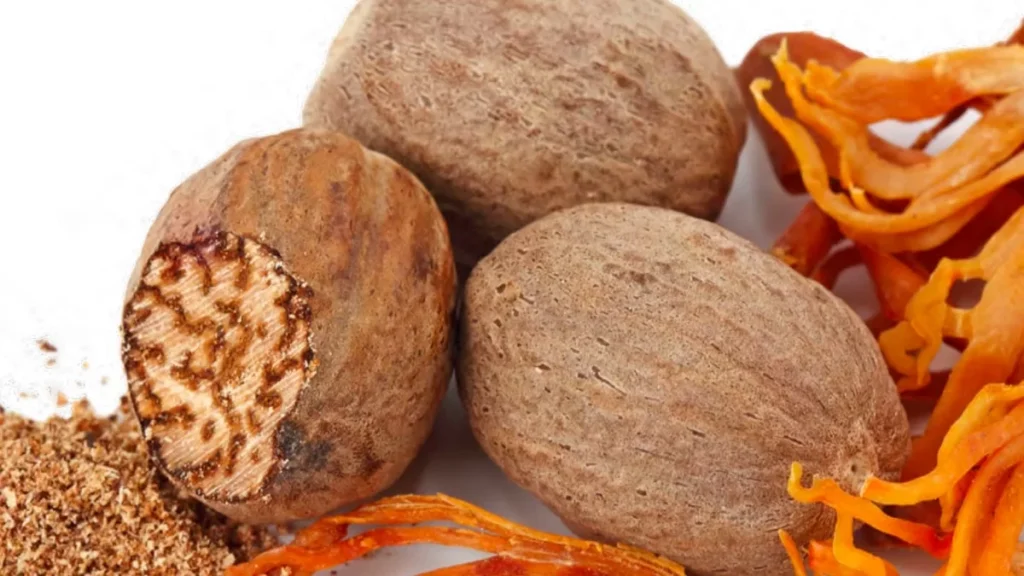The Unseen Force Behind Flavor
Two beverages. Nearly identical ingredients. Yet one tastes bright and refreshing, while the other falls flat. What made the difference? More often than not, the answer lies in pH in flavor formulation.
In the world of flavor formulation, pH isn’t just a number on a spec sheet—it’s a quiet force that shapes how consumers experience taste, aroma, and mouthfeel. From the zing of a citrus-forward sports drink to the mellow depth of a savory broth, even slight shifts in acidity can dramatically impact how flavors unfold on the palate.
At Trilogy Flavors, our scientists understand the delicate balance between flavor chemistry and functional performance. We’ve seen how pH can amplify sweetness, temper bitterness, and fine-tune the overall flavor experience—especially in challenging matrices like plant-based proteins or shelf-stable beverages.
In this article, we’ll explore how pH influences flavor perception, why it matters across different product categories, and how a strategic approach to pH in flavor formulation can unlock both creative and technical advantages.
What Is pH, and Why Does It Matter in Food?
In technical terms, pH is a measure of how acidic or basic (alkaline) a substance is, measured on a scale from 0 to 14. A pH of 7 is neutral—pure water, for example—while lower values indicate increasing acidity, and higher values indicate increasing alkalinity.
In the context of food and beverage development, pH in flavor formulation does much more than affect microbial stability or label compliance. It directly shapes how ingredients interact and, ultimately, how a product tastes.
A beverage with a pH of 3.5 can carry bright, sharp flavor notes, while the same formulation at pH 4.2 may come across as noticeably duller or muted. That’s because acidity affects not just chemical reactions in the matrix, but how our taste receptors respond to specific compounds.
Even trace-level changes in pH can alter:
- Perceived intensity of sour, sweet, and bitter notes
- Solubility and expression of certain flavor molecules
- Release of aromatic compounds during consumption
This makes management of pH in flavor formulation a critical consideration for flavor scientists. It’s not just about preventing spoilage or passing QA—it’s about achieving the precise sensory experience that aligns with consumer expectations.
At Trilogy, we approach pH as both a constraint and a creative tool. By understanding its role across applications, our team helps food and beverage manufacturers fine-tune flavor delivery in ways that elevate product quality and consistency.
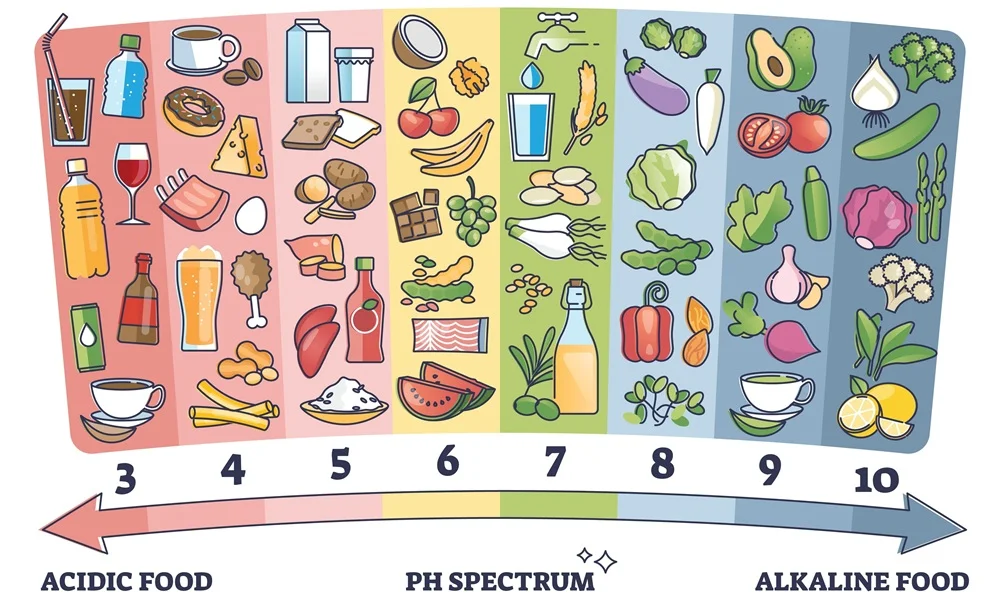
Taste Modulation: How pH in flavor formulation Influences the Five Basic Tastes
Flavor isn’t static—it evolves on the palate, shaped by a complex interplay of sensory cues. Among these, pH in flavor formulation plays a pivotal role in determining how the five basic tastes are perceived: sour, sweet, salty, bitter, and umami. A minor shift in acidity can enhance or suppress key flavor notes, transforming the overall sensory experience.
Understanding how to strategically manage pH in flavor formulation helps product developers unlock better balance, improved mouthfeel, and cleaner-tasting profiles—especially in challenging or reduced-label systems.
Let’s explore how acidity interacts with each taste—and how formulation scientists can use this knowledge to build more appealing products.
1. Sour: Acidity in Its Element
Sourness is the most directly linked to pH. The lower the pH, the more intense the perception of sour. This makes pH control essential in citrus-forward beverages, fermented foods, and fruit-based products. But it’s not just about intensity—balancing acidity ensures sour notes are perceived as refreshing rather than harsh.
Trilogy’s approach: We help brands refine acidity in complex formulations, maintaining brightness without overwhelming the palate.
2. Sweet: A Balancing Act
Acidity can dramatically influence sweetness perception. A low pH can reduce perceived sweetness by muting sugar molecules’ interaction with taste receptors. Conversely, strategic acidity can sharpen sweet flavors, especially in fruit-flavored profiles.
Example: In reduced-sugar products, carefully managed pH can compensate for sweetness loss, enhancing the overall flavor without adding more sugar.
3. Salty: Subtle Interactions
While saltiness isn’t directly governed by pH, acidity can modify how salt is experienced. In low-sodium formulations, adjusting pH can help amplify the savory perception of salt, creating a more satisfying flavor without increasing sodium content.
Formulation insight: Trilogy scientists often use pH optimization alongside flavor enhancers to help clients meet clean-label or regulatory targets.
4. Bitter: Suppression or Spotlight
Bitterness is particularly sensitive to pH. Certain bitter compounds—common in plant-based proteins, cocoa, or botanicals—become more pronounced under specific pH conditions. By adjusting pH, formulators can either suppress off-notes or allow pleasant, complex bitterness to come forward.
Trilogy in action: Our scientists know that getting pH right is about more than just taste—it’s about functionality. With a deep understanding of pH in flavor formulation, we help manufacturers achieve the right sensory balance across complex food systems.
5. Umami: The Savory Spectrum
Umami compounds, like glutamates and nucleotides, express differently depending on pH. Slight acidity can enhance depth and richness in broths, meats, and savory seasonings. However, if the pH shifts too far, these same compounds may taste flat or metallic.
Trilogy’s take: Our scientists dial in pH to ensure umami hits the right savory, satisfying note—especially in plant-based and reduced-meat formulations.
Bottom line: pH in flavor formulation isn’t just about food safety or shelf life. It’s a precision tool that, when wielded skillfully, can unlock a more dynamic and appealing flavor profile. At Trilogy, we leverage this science every day to help brands craft taste experiences that resonate.
Additional reading: How Taste Sensation Affects Flavor Development
The Technical Side: pH and Flavor Stability
When we talk about flavor, we often focus on what the consumer tastes in that first bite or sip. But long before a product reaches the shelf—or the palate—pH in flavor formulation plays a critical behind-the-scenes role in maintaining flavor integrity over time.
That’s because pH affects much more than just taste perception. It directly influences:
- Flavor compound stability
- Aroma release and volatility
- Color retention
- Ingredient solubility and emulsion behavior
Flavor Compounds and pH Sensitivity
Many natural and synthetic flavor components are pH-sensitive. Certain esters and aldehydes, for instance, can degrade or shift character when exposed to highly acidic or alkaline conditions. This means that even a flavor system that tastes perfect during bench-top development might behave very differently in a finished product with a pH outside its ideal range.
Trilogy’s advantage: Our scientists evaluate how each flavor performs across a range of pH conditions, helping clients avoid unexpected changes in flavor over time or during processing.
Aroma Volatility and Shelf Life
pH can also influence how aromas are released, especially in beverages, sauces, or ready-to-drink products. A lower pH often increases the volatility of aromatic compounds—sometimes amplifying them in the short term, but also increasing the risk of aroma loss over time.
By understanding the interaction between pH in flavor formulation and aroma release, formulators can design flavors that hold up longer while still delivering on-shelf appeal.
Color and Emulsion Stability
In multi-phase systems like emulsions or dressings, pH impacts not only flavor but also the physical stability of the product. It affects how emulsifiers behave, how pigments appear, and how flavors bind (or fail to bind) within the system.
For example: Anthocyanin-based colors can shift dramatically in response to pH—appearing red in acidic environments and blue or purple in more neutral conditions. This visual shift can alter how consumers perceive taste before even taking a bite.
Why It Matters for Product Developers
For R&D teams, this technical understanding of pH in flavor formulation can prevent costly surprises later in development. Whether you’re working with high-acid beverages, dairy alternatives, or shelf-stable condiments, getting the pH balance right from the start can improve consistency, reduce reformulation time, and support cleaner ingredient declarations.
Trilogy’s collaborative approach helps manufacturers identify the optimal pH-flavor relationship early in the process—streamlining development and enhancing product performance from formulation to finish.
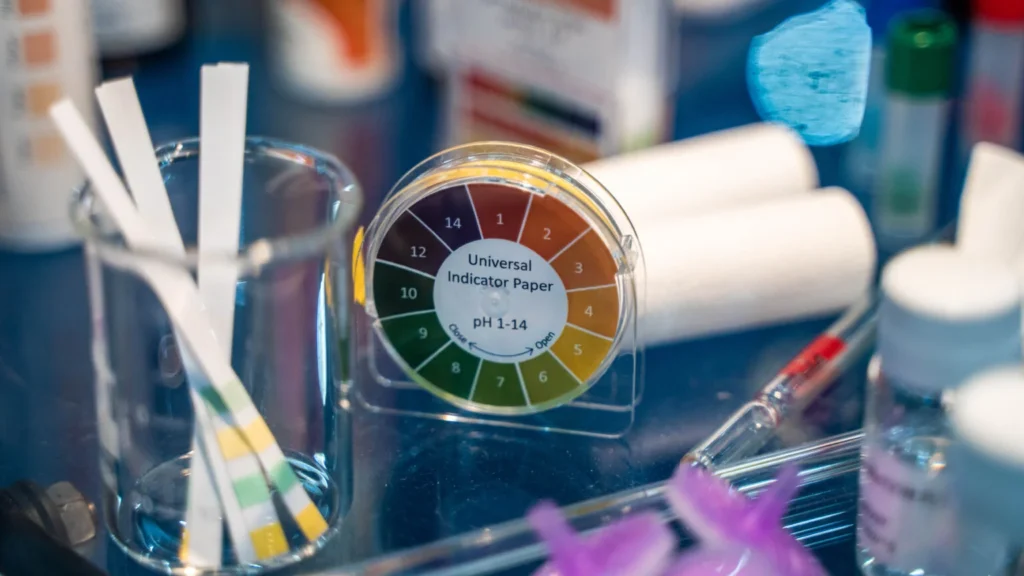
Application Spotlight: pH Challenges Across Food Categories
Every product category comes with its own set of formulation challenges—and pH in flavor formulation is often at the heart of them. From the acid-driven volatility of beverages to the bitterness management in plant-based proteins, understanding how pH behaves within specific matrices is key to delivering consistent, crave-worthy flavor.
Here’s a look at how pH considerations play out across several major categories:
Beverages: Navigating Acidity Without Sacrificing Flavor
Whether it’s a sparkling juice, energy drink, or functional beverage, acidic conditions are common—but they’re not without complications. High-acid environments (often pH 2.5–4.0) can destabilize delicate flavor compounds or push fruit notes toward harshness or artificiality.
Trilogy’s solution: We design and test flavor systems specifically for low-pH applications, ensuring flavor longevity and vibrant taste—without the unwanted metallic or sour edge.
Plant-Based Proteins: Taming Bitterness and Elevating Umami
Pea, soy, and other plant proteins naturally contain bitter compounds that become more pronounced under certain pH conditions. Since many alt-protein products fall in the neutral to slightly alkaline range (pH 6–7.5), managing pH in flavor formulation is critical for masking off-notes and boosting savory appeal.
Trilogy in action: Our flavor scientists use targeted pH adjustment, bitterness blockers, and reaction flavors to create balanced, meaty profiles—even in the trickiest bases.
Condiments & Sauces: Balancing Tang and Complexity
Products like ketchups, vinaigrettes, and fermented sauces often sit in acidic territory (pH 3–4.5). While acidity is key to their flavor identity, it can also overwhelm subtle spices or umami components.
Formulation strategy: Trilogy develops flavor systems that hold their complexity under acidic conditions—ensuring that herbs, spices, and savory notes shine through without clashing.
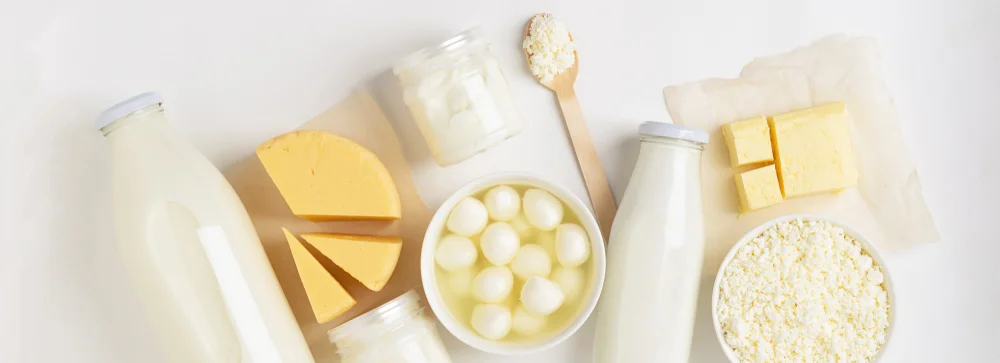
Dairy & Alt-Dairy: Managing Fermentation and Freshness
In traditional dairy and fermented plant-based alternatives, pH changes dynamically during processing. As pH drops (typically from around 6.5 to 4.5), flavor perception evolves—sometimes in unpredictable ways.
Trilogy’s edge: We create flavor systems that evolve with the matrix, maintaining freshness and appeal even as pH shifts during fermentation or storage.
Shelf-Stable & Ready-to-Eat Products: Long-Term Flavor Integrity
In canned soups, dressings, or heat-treated ready meals, pH in flavor formulation must be considered not just for flavor delivery, but for long-term stability. Flavors must survive thermal processing and extended shelf life without degrading or muting.
Trilogy’s approach: We rigorously test flavor systems under real-world processing conditions to ensure they hold up in both taste and aroma—even months after production.
Across categories, the message is clear: flavor doesn’t exist in a vacuum. It lives inside complex systems where pH in flavor formulation is both a constraint and a creative tool. At Trilogy, we help our partners turn that challenge into an opportunity—one well-balanced product at a time.
The Formulator’s Toolbox: Adjusting pH Without Compromising Flavor
In a perfect world, pH would align seamlessly with the flavor goals of every formulation. In reality, it’s often a balancing act between taste, stability, regulatory requirements, and process constraints. But the good news is: formulators don’t have to choose between product integrity and great taste.
With the right tools—and the right partners—pH in flavor formulation can be adjusted strategically, preserving or even enhancing the sensory experience.
Natural Acidulants and Bases
Adjusting pH starts with selecting the right acid or base—but not all are created equal. Each comes with its own flavor footprint and functional behavior.
- Citric acid: Bright, clean sourness—common in beverages and fruit-flavored systems.
- Lactic acid: Milder, dairy-like acidity—ideal for creamy sauces, soups, and alt-dairy.
- Malic acid: A slow-build acidity—great for smoother tartness in confections or fruit blends.
- Phosphoric acid: Often used in cola-type soft drinks for a sharp, distinct bite.
- Sodium bicarbonate: Useful in baked goods and to neutralize acidity—but can affect flavor perception if not carefully balanced.
Trilogy’s perspective: We help clients choose acidulants that fit the flavor story—not just the pH spec—so the result is functionally sound and sensorially appealing.
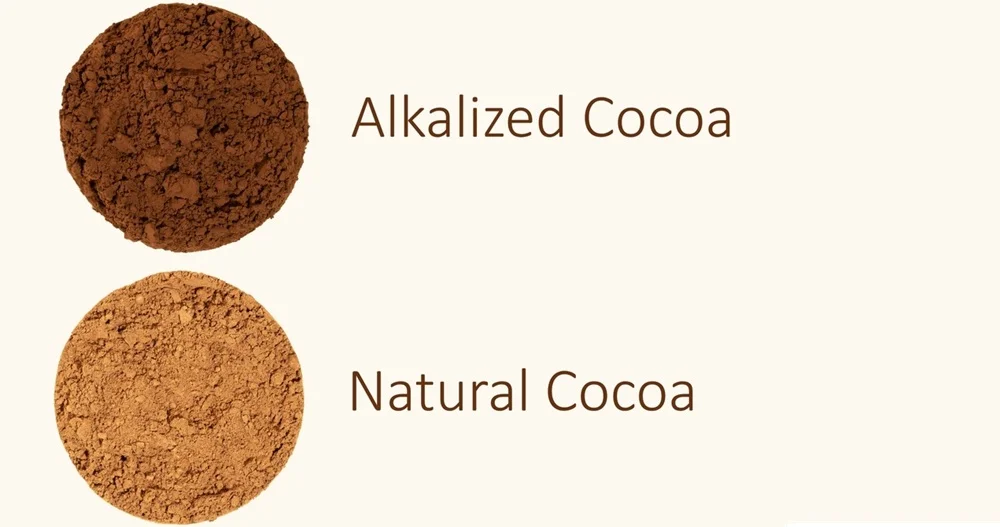
Flavor Masking and Enhancement Strategies
When pH in flavor formulation constraints push flavor in the wrong direction (e.g., flattening sweetness, amplifying bitterness), masking agents and natural flavor enhancers can help bring things back into balance.
- Bitterness blockers for plant-based proteins or botanical extracts
- Natural sweet enhancers to offset acid-driven suppression of sweetness
- Mouthfeel enhancers to add body and roundness in high-acid systems
These tools allow formulators to work with pH limitations—not against them—creating products that taste better than their specs would suggest.
Reaction Flavors That Thrive Under Specific pH Conditions
Some of the most complex, savory flavors—like those developed through Maillard reactions—perform best under specific pH conditions. In slightly alkaline environments, these reactions produce rich, roasted, or meaty notes ideal for soups, sauces, and meat analogs.
Trilogy’s strength: We specialize in crafting reaction flavors that remain stable and expressive in defined pH zones, whether that’s acidic, neutral, or slightly basic.
Custom Flavor Systems Designed Around pH
Ultimately, no single tool works in isolation. That’s why custom flavor systems—built with a clear understanding of the product’s pH environment—offer the most effective solution. These systems anticipate how pH will impact each component, ensuring balanced delivery from first taste to last shelf day.
At Trilogy, we build these systems collaboratively, helping clients minimize guesswork and maximize performance.
Whether you’re reformulating for cleaner labels, optimizing shelf life, or trying to tame a tricky plant base, pH in flavor formulation is a powerful lever. And when used thoughtfully, it opens up more possibilities—not more problems.
Collaboration Is Key: Why pH-Savvy Flavor Design Requires a Scientific Partner
Getting flavor right is never just about the flavor itself—it’s about understanding the full context of the formulation. And when pH in flavor formulation is in play, that context becomes even more critical. From ingredient interactions to processing variables, even minor oversights can shift the final taste in unpredictable ways.
That’s why flavor development isn’t a plug-and-play process. It’s a partnership.
Why Formulators and Flavor Scientists Should Work in Tandem
pH in flavor formulation impacts everything from ingredient solubility to sensory perception. But it doesn’t act alone. It intersects with:
- Thermal processing (which can break down or intensify flavor compounds)
- Matrix effects (like how protein or fat content buffers acidity)
- Packaging and shelf life goals (requiring flavor systems that stay stable over time)
When flavor scientists collaborate closely with product developers, these variables can be addressed before they become obstacles—saving time, reducing reformulation cycles, and improving product success rates.
At Trilogy, our team doesn’t just create flavors—we co-create solutions, including those dealing with pH in flavor formulation . We dig into the details of each client’s process and matrix to design systems that perform under real-world conditions, not just ideal lab scenarios.
Early Collaboration = Better Results
Engaging with a flavor partner early in the development process allows for:
- Smarter pH planning, tailored to your product’s technical constraints
- Faster prototyping, because fewer adjustments are needed down the line
- Greater consistency, with flavors that hold up from batch to batch and shelf to spoon
Your Flavor Is Only as Good as Its Fit
Even the most beautifully crafted flavor won’t shine if it isn’t tuned to the right pH environment. That’s where experience matters. At Trilogy, we combine technical knowledge with formulation intuition—ensuring every flavor system we deliver is both scientifically sound and sensorially successful.
Whether you’re launching a bold new beverage, reformulating a plant-based entrée, or refining a long-standing product line, Trilogy can help you harness the power of pH in flavor formulation to get there faster—and taste better.
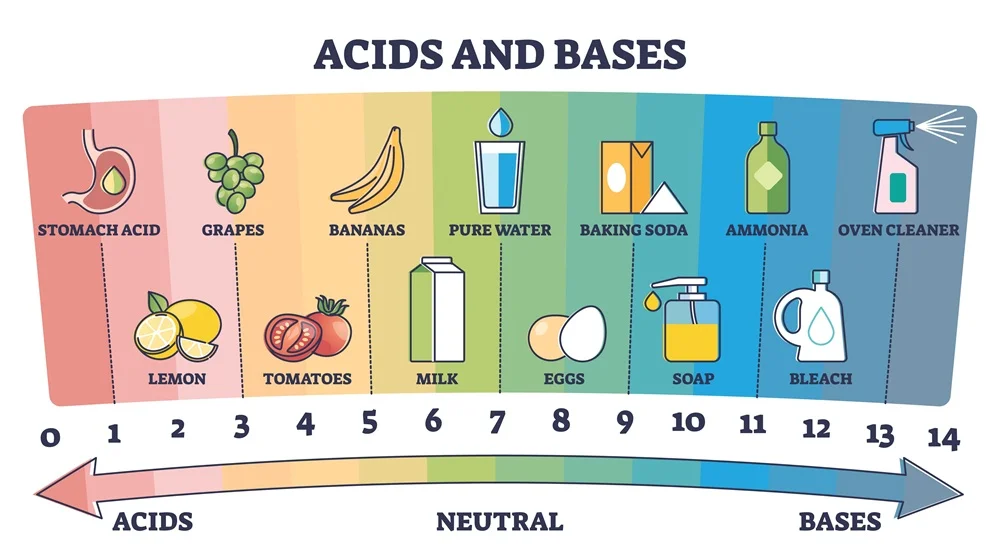
Conclusion: Turning pH Challenges into Flavor Opportunities
In the complex world of food and beverage development, pH is more than just a technical parameter—it’s a powerful influence on how consumers experience flavor. Whether it’s enhancing sweetness, masking bitterness, or preserving aromatic integrity, pH in flavor formulation shapes every sensory detail.
The key to success lies in understanding how pH interacts with flavor systems and in partnering with experts who can translate that science into products that resonate.
At Trilogy Flavors, we bring both depth and agility to the table—designing flavor solutions that perform across diverse pH environments and real-world processing conditions. When formulation teams and flavor scientists work hand in hand, the results speak for themselves: better-tasting, more stable, and more competitive products. Talk with us today!
